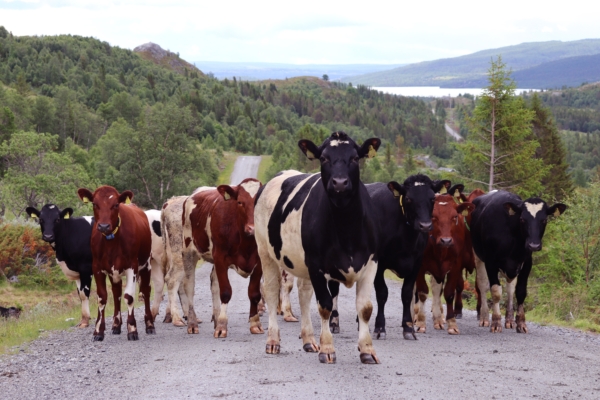With the change in people’s dietary habits, the livestock industry has been able to develop rapidly. However, the excrement of large livestock such as cows, sheep, and pigs has long exceeded the environmental capacity. In order to address this issue, British scientists have developed a new technology to extract cellulose from cow dung and use it to produce textile materials for everyday goods.
Studies have shown that the amount of excrement generated by the global livestock industry has increased rapidly by over 40% in just 20 years, totaling approximately 5 billion tons. This has led to huge amounts of animal excrement that cannot be fully utilized effectively, often being discharged into waterways, rivers, and oceans, not only severely affecting the local ecological environment but also potentially transmitting diseases to humans.
Previously, animal excrement was used for crop fertilizers, fuel, and building insulation materials. With further research on animal waste, scientists have started extracting high-value substances such as nanocellulose from excrement and refining them into high-value products.
The research team at the University College London in the UK has developed a new technology to extract cellulose from collected cow dung and manufacture various products such as surgical masks and food packaging. This research was published in mid-April in the “Clean Production Journal” and received funding from the UK Research and Innovation Agency (UKRI).
Cellulose is one of the most commonly used materials in the world, present in plant cell walls and widely extracted since the mid-19th century Industrial Revolution for synthetic materials. Today, it is extensively used in the production of cling film, medical masks, paper products, textiles, food, pharmaceuticals, and other products.
The team first dried cow dung samples containing cellulose (1.6-23.5%), hemicellulose (1.4-12.8%), and lignin (2.7-13.9%), then placed them in an oven for drying and sterilization.
Subsequently, they ground the dried cow dung, sieved it into smaller particles, and used chemical substances such as ice acetic acid, sodium hypochlorite solution, sodium chloride (NaCl), and sodium hydroxide (NaOH) to remove non-cellulose substances such as proteins, fats, and carbohydrates from the cow dung, and then extracted the nanocellulose with a machine.
The researchers employed an improved “wet horizontal nozzle pressurized spinning (NPS)” technique, which involves spinning nanocellulose from the nozzle at high speeds and pressures, allowing the cellulose to form ribbon, mesh, and membrane fibers upon contact with water. This new technology is an energy-saving process that does not require the high voltage needed for other fiber production techniques such as electrostatic spinning.
The researchers stated that the research is still in its early stages, but these different forms of fibers could be used in packaging, energy storage, electronics, and biomedicine, showing significant potential.
The research team mentioned that modifying existing pressurized spinning machines to adapt to the new process is relatively straightforward. However, the current major challenge lies in the recycling, transportation logistics, and storage of cow dung. They are currently seeking collaboration with dairy farmers to expand production scale, achieve environmental and commercial benefits, and enable the reuse of waste materials.
Senior author of the research and professor of the Department of Mechanical Engineering at University College London, Mohan Edirisinghe, commented to the university’s newsroom, “Our initial question was whether it was possible to extract cellulose micro-fragments existing in cow dung (leftover from animals consuming plants) and transform them into usable cellulose materials.”
Professor Edirisinghe continued, “Extracting fragments from excrement is relatively simple, requiring mild chemical reactions and homogenization to transform them into liquid solutions. However, when we attempted to use conventional pressurized spinning techniques from the past, we were unable to convert these fragments into fibers as desired.”
He further explained that through repeated experiments, the team discovered that using a horizontal container with surface nozzles (instead of vertical containers) could successfully eject the liquid into stagnant or flowing water to form cellulose and even create mesh, film, or ribbon cellulose by adjusting the viscosity of the liquid in different scenarios.
Edirisinghe added, “We are still not entirely clear why this process is effective, but it does produce the cellulose we want. This improved wet horizontal nozzle pressurized spinning technology has equipment and containers designed and manufactured by our university, making it relatively easy to scale up.”
The lead author of the research, Ms. Yanqi Dai from the Department of Mechanical Engineering at University College London, stated, “Waste products such as cow dung from dairy farms pose threats to the environment and human health due to polluting water sources, releasing greenhouse gases, and spreading pathogens. Properly managing the costs associated with the waste generated by these cow dung will also burden farmers.”
She further mentioned, “The improved wet nozzle pressurized spinning technology not only allows for the full utilization of these cow dung waste products but may even create new sources of income for the livestock industry.”

